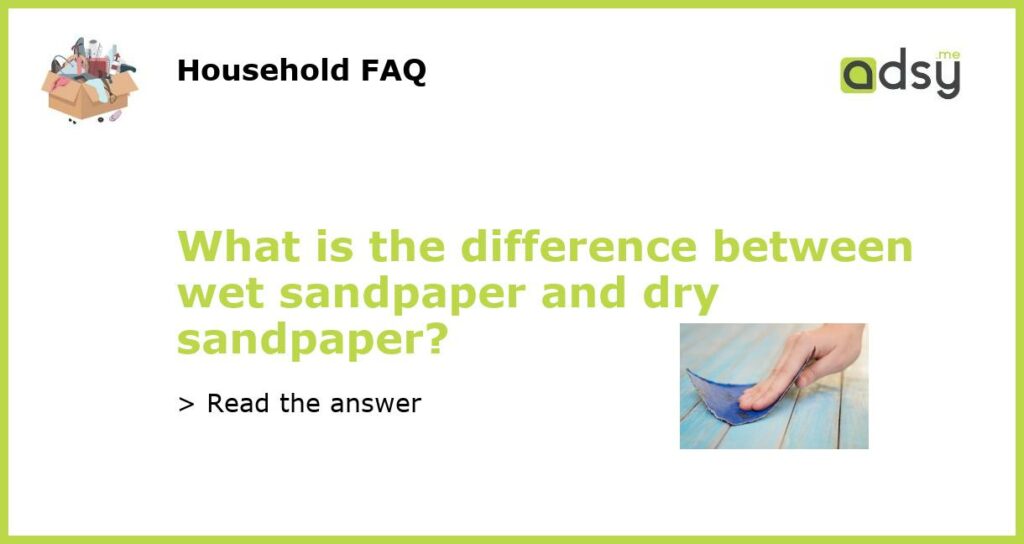Wet Sandpaper vs Dry Sandpaper: Understanding the Difference
When it comes to sanding surfaces, whether for woodworking projects, automotive repairs, or home improvement tasks, sandpaper is an essential tool. However, there are two types of sandpaper commonly used: wet sandpaper and dry sandpaper. While both serve the same purpose of smoothing and removing imperfections, they differ in their composition and ideal applications. Let’s explore the differences between wet and dry sandpaper to help you choose the right one for your needs.
Composition and Texture
The primary difference between wet sandpaper and dry sandpaper lies in their composition and texture. Dry sandpaper, typically made of a paper or cloth backing, features abrasive particles on one side. These particles can be made of materials such as aluminum oxide, silicon carbide, or garnet. The chosen abrasive material determines the sandpaper’s grit, which indicates the coarseness of its particles.
In contrast, wet sandpaper is generally made of a waterproof backing material, like plastic or cloth, and has abrasive particles embedded in it. Instead of relying on friction for sanding, wet sandpaper uses a lubricant, usually water, to carry away debris and heat generated during the sanding process. This lubricating effect makes wet sandpaper less likely to clog and overheat, leading to smoother results.
Applications and Advantages
Each type of sandpaper has its own ideal applications and advantages. Dry sandpaper is commonly used for tasks such as sanding wood, metal, or plastic surfaces. Its dry composition makes it perfect for shaping and smoothing surfaces, especially when using power sanders. Dry sanding is particularly effective when the goal is to remove a significant amount of material or create a smooth finish before applying paint or varnish.
On the other hand, wet sandpaper primarily finds its use in auto body repair and refinishing. The lubrication provided by water or other liquid solutions aids in reducing surface scratches and prevents the sandpaper from clogging. Wet sanding is especially helpful when working on delicate surfaces or when trying to achieve a high-gloss finish. The water not only helps to keep the surface cool but also eliminates dust particles, resulting in a cleaner work environment and better sanding outcomes.
Precautions and Tips
While understanding the difference between wet sandpaper and dry sandpaper is important, it’s equally essential to use them correctly to achieve the desired results and ensure your safety. Here are some precautions and tips to keep in mind:
1. Wear protective gear, such as safety goggles and a dust mask, while sanding to protect your eyes and lungs from fine particles.
2. When using wet sandpaper, avoid soaking it for extended periods as it may lead to the detachment of abrasive particles from the backing.
3. Use a sanding block or a sanding sponge to ensure even pressure distribution and prevent accidental over-sanding or uneven surfaces.
4. When dry sanding, periodically check the sandpaper for signs of clogging. If it becomes clogged, gently tap or brush the sandpaper against a clean surface to remove the debris.
5. Choose the right grit of sandpaper for the task at hand. Lower grits (coarser) remove material quickly, while higher grits (finer) provide a smoother finish. Start with lower grits and progress to higher grits for best results.
Both wet sandpaper and dry sandpaper have their own unique qualities and applications. Dry sandpaper is excellent for shaping and smoothing surfaces, while wet sandpaper is preferred for auto body repair and finishing works. Understanding their differences and using them correctly will help you achieve the best results for your sanding projects. Remember to prioritize safety and follow the recommended precautions to ensure a successful and efficient sanding experience.






